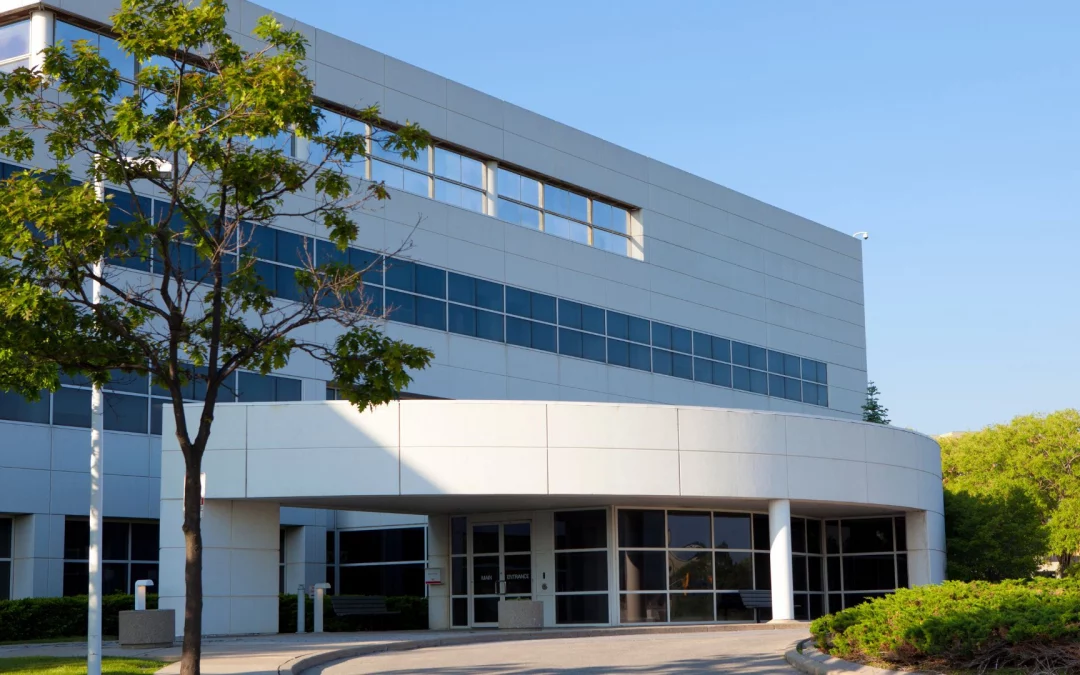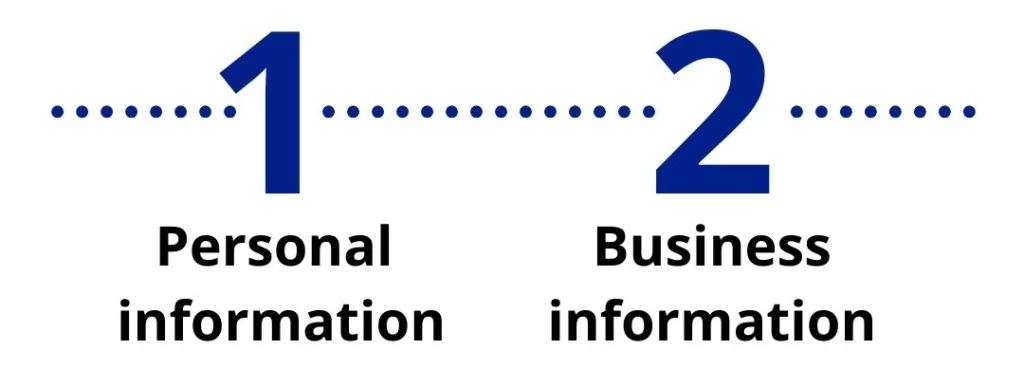As a business owner or building manager you understand how energy costs reduce your bottom line, especially with the astronomically high energy prices we are seeing today. The EPA estimates that commercial buildings waste about 30% of the energy they use on average. This gives you an opportunity to improve your energy efficiency and lower your electricity and natural gas bills.
9 Ways to reduce energy use
1. Lighting upgrades
17% of all electricity consumed by commercial buildings is from lighting, this makes upgrading to LED lighting one of the best things that will immediately lower electricity bills. LED lighting uses up to 90% less energy than traditional lighting and can last up to 15 times longer.
Implementing lighting upgrades is an essential energy-saving idea for commercial buildings, offering significant opportunities to reduce energy consumption and achieve commercial electricity savings.
Traditional lighting technologies, such as incandescent bulbs, are notorious for their inefficiency and excessive energy use. By transitioning to more energy-efficient lighting options, businesses can not only reduce their environmental impact but also lower their electricity bills.
Incandescent lighting, once commonly used in commercial properties, consumes a substantial amount of electricity for commercial property lighting. These bulbs operate by passing an electric current through a filament, which emits light but also generates a considerable amount of heat, resulting in a wasteful use of energy. In fact, a significant portion of the energy consumed by incandescent bulbs is lost as heat rather than light.
To reduce energy use and promote energy efficiency in commercial buildings, it is crucial to replace incandescent bulbs with more energy-efficient alternatives, such as LED (Light Emitting Diode) or CFL (Compact Fluorescent Lamp) bulbs.
LED bulbs, in particular, are a popular choice due to their exceptional energy-saving properties. They consume up to 90% less energy compared to incandescent bulbs, resulting in substantial commercial electricity savings.
LED lighting not only reduces energy consumption but also offers several additional benefits for commercial buildings.
These bulbs have a longer lifespan, requiring less frequent replacements, which can result in further cost savings for businesses. LED lighting is also highly customizable, allowing for the adjustment of brightness and color temperature to create the desired ambiance in various areas of the building.
If you want more information about LED lighting, these articles can help:
Top 5 benefits of LED lighting in commercial settings
Save Big On Maintenance Costs By Retrofitting Your Business Lighting to LED
Another great way to save is by taking advantage of smart lighting by utilizing timers or motion sensors. This way lighting doesn’t accidentally get left on all day and night.
2. HVAC maintenance
HVAC energy consumption in commercial buildings is a major issue. Per the US Small Business Administration, HVAC to heat and cool accounts for around 40% of electricity used in commercial buildings. As an energy saving tip in office buildings and other commercial properties, routine HVAC maintenance is essential.
Proper HVAC maintenance is a vital aspect of reducing energy consumption and achieving energy savings in commercial buildings. HVAC systems, responsible for heating, ventilation, and air conditioning, can account for a significant portion of energy use in commercial buildings. By implementing effective HVAC maintenance practices, businesses can optimize system performance, enhance energy efficiency, and lower operating costs.
Regular maintenance of HVAC systems is crucial to ensure their optimal operation and prevent energy waste. This includes tasks such as cleaning and replacing air filters, inspecting and repairing ductwork for leaks, calibrating thermostats, and conducting routine system checks. By keeping the HVAC system well-maintained, businesses can improve its efficiency and minimize unnecessary energy consumption.
3. Ensure your building is properly insulated
Making sure that your building is properly insulated and sealed can save your business up to 10% on your energy bill, per the EPA. Don’t just look at obvious places like windows and walls. Your roof, HVAC ducts, electrical outlets, pipes, etc. are also important.
Proper insulation is a crucial energy conservation measure for commercial buildings, leading to significant commercial energy savings and creating an energy-efficient building. Insulation plays a vital role in minimizing heat transfer, maintaining desired temperatures, and reducing the reliance on heating and cooling systems.
By ensuring that your building is properly insulated, you can prevent energy waste and optimize energy use. Well-insulated walls, roofs, and windows act as barriers against heat transfer, effectively reducing the need for excessive heating or cooling. This results in lower energy consumption and substantial cost savings for commercial properties.
4. Use power management settings on computers and other hardware
Implementing power management settings on computers and other hardware is a simple yet effective commercial energy-saving idea. By utilizing these settings, businesses can contribute to energy conservation, reduce energy costs, and align with sustainable practices.
Energy Star, a widely recognized program promoting energy efficiency, provides valuable resources and guidelines for businesses to optimize energy use. Energy managers and building operators can leverage these resources to implement power management settings effectively.
Per EnergyStar, each office desktop computer wastes up to $50 a year. Utilizing power management settings on your computers and other hardware is an easy way to reduce electricity use.
5. Upgrade or retrofit your HVAC system
Upgrading or retrofitting your HVAC system is a proactive approach to reducing energy consumption in commercial buildings and creating an energy-saving building. HVAC systems often account for a significant portion of total energy usage in commercial properties.
By upgrading or retrofitting the HVAC system with more energy-efficient components and technologies, businesses can achieve substantial energy savings and enhance overall building efficiency.
Upgrades may include installing high-efficiency heating and cooling units, implementing advanced controls and sensors, optimizing ductwork and ventilation systems, and integrating smart thermostats. These improvements result in reduced energy consumption, improved thermal comfort, and better control over energy usage, all contributing to a more energy-efficient and sustainable commercial building.
Depending on how old your HVAC unit is, how large it is and how well maintained it is, will determine if it’s a good candidate for a retrofit or if it needs to be replaced entirely. A good example of this is if your unit is 10 or so years old , you could likely save 20% on cooling costs by upgrading it.
We recommend getting a professional out to inspect your HVAC system specifically or getting an energy audit.
6. If your business is located in a deregulated state, take advantage of it
If your business is located in a deregulated state, it presents a unique opportunity to take advantage of competitive energy markets and optimize energy management in commercial buildings.
Deregulation allows businesses to choose their electricity supplier and potentially secure better electricity rates, leading to potential cost savings. By exploring different energy providers and their offerings, businesses can get a fixed-rate, which can be significantly less than what you pay your utility company and also evaluate renewable energy options to qualify for green energy certificates, and other sustainable solutions.
Deregulated energy markets also foster innovation and encourage the adoption of energy-efficient technologies, as suppliers compete to offer the most attractive and sustainable energy solutions. By actively participating in the deregulated market and making informed choices, businesses can optimize their energy management strategies, reduce costs, support renewable energy, and contribute to a greener and more sustainable future for their commercial buildings.
Want to see if you can lock in a good energy rate? Get a free quote
7. Get an energy audit
Energy audits are assessments of your business’s energy usage to determine how efficient or inefficient it is. The audit will identify problems like substandard weatherization, leaks, HVAC issues, etc.
Getting an energy audit is a valuable step in implementing energy efficiency measures for commercial buildings and exploring commercial energy-saving ideas. An energy audit involves a comprehensive assessment of a building’s energy usage, systems, and overall efficiency.
By engaging professionals to conduct an energy audit, businesses gain valuable insights into their building energy performance and identify areas where energy-saving measures can be implemented. Through the audit process, potential energy-saving opportunities are identified, including optimizing HVAC systems, improving insulation, upgrading lighting, and enhancing building controls.
Energy audits also provide valuable data and recommendations that enable businesses to make informed decisions and prioritize energy-saving investments. By proactively obtaining an energy audit, businesses can uncover untapped energy-saving potential, reduce energy consumption, lower operating costs, and create more sustainable and efficient commercial buildings.
8. Utilize EnergyStar resources
EnergyStar.gov has a wealth of information from checklists to energy ratings on appliances and hardware. Specifically EnergyStar created “Treasure Hunts” which are detailed industry specific checklists designed to help you reduce overall energy use.
Utilizing EnergyStar resources is a valuable strategy for commercial buildings to enhance energy efficiency and achieve energy savings. EnergyStar offers a wealth of information, tools, and guidelines that can help businesses identify energy-saving opportunities, make informed decisions when purchasing energy-efficient equipment, and implement effective energy management practices.
By leveraging EnergyStar resources, businesses can gain valuable insights and support in their journey towards creating more sustainable and energy-efficient buildings.
9. Manage water use
Managing water use is a crucial aspect of energy conservation in commercial buildings. By implementing water-saving measures, such as installing efficient fixtures, promoting responsible water use practices, and regularly monitoring water consumption, businesses can not only reduce water waste but also lower the energy required for heating and cooling systems, leading to overall energy and cost savings.



